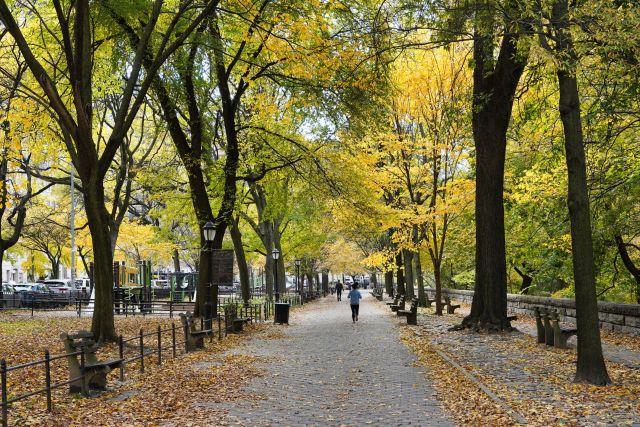Updated on October 27, 2023.
You’ve probably heard about the many ways in which spending time outdoors can improve your health. And research has shown that having access to parks and green spaces are associated with a range of health benefits, including lower risks of obesity, diabetes, and heart disease.
Parks can help people increase their levels of physical activity and improve mental health, according to the Centers for Disease Control and Prevention (CDC). They also help reduce pollution, offer safe spaces to play and socialize, and strengthen community bonds. Here are just a few of the evidence-backed ways that green spaces and outdoor areas can help you live a longer and healthier life.
Good for your body
Some of the world’s most deadly diseases can be reduced by having access to parks and green spaces. A 2021 study published in Lancet Planet Health imagined a scenario in which European cities all had the amount of universally accessible green space that the World Health Organization (WHO) recommends. (The WHO ideal is that all people live within 300 meters, or about 1,000 feet, of green space.) The authors then calculated how many lives would be saved from all causes of natural death as a result of that access. The upshot? As many as 17,000 to 43,000 lives could be saved each year.
Parks can also help reduce levels of obesity, which in turn can contribute to lower rates of heart disease, stroke, diabetes, some types of cancer, osteoarthritis, and reproductive problems. People who live in areas where they’re exposed to more green space have lower body mass indexes (BMIs) than those who live in places with less—or no—green space, according to a 2022 study published in the International Journal of Environmental Research and Public Health.
Heart disease, the number one cause of death in the United States, is also found less often in places with more green space. After analyzing a large data set, researchers stated in a 2022 review published in Environmental Pollution that increasing green space by even a small increment in a given area had a measurable effect. (The study used a measure called NDVI or Normalized Difference Vegetation Index.) An increase of 0.1 on the NDVI scale lowered residents’ odds of dying of heart disease or of having strokes by 2 to 3 percent.
There may be a benefit for type 2 diabetes, as well. In a 2021 review published in the International Journal of Environmental Research and Public Health, scientists looked at 19 studies and found that when people are exposed to green spaces where they live, not only is their risk of obesity lowered, but their risk of developing type 2 diabetes is also reduced.
Good for your mind
Parks and green space can do more for your health than reduce the risk of disease. They’re good for your mind and mood, as well. Exposure to forest environments appears to lower levels of cortisol—a biomarker for stress—according to a 2019 review of 22 studies published in the International Journal of Biometeorology. Being in a forest can bring down stress levels and boost a sense of well-being, found a a 2020 review published in the International Journal of Environmental Research and Public Health.
The mental benefits of nature may also translate even if you can’t be in a green environment in person. Even a photographic representation may help. A 2022 study published in the International Journal of Environmental Research and Public Health found that when stressed participants simply looked at pictures of nature scenes, they performed better on tests than when they looked at pictures of urban scenes.
Options if parks are not available
As healthy and beneficial as they are, it’s worth remembering that not everyone has access to parks and green spaces. People living in rural areas may be surrounded by trees but may lack access to sidewalks and trails and other walkable venues. Many urban areas simply lack parks or green spaces.
That limitation may be overcome in some cases by taking advantage of walkable—even if not green—spaces. A 2022 study published in the journal Obesity looked at the connections between physical activity, obesity, and what researchers called perceived neighborhood walkability. For most of the participants, the more walkable their space was perceived to be, the lower the BMIs of people in that neighborhood.
The challenge is that some spaces—whether urban sidewalks or rural roads—may be unsafe for walking. In short, the health benefits of nature are not always equally distributed for all people.
There are still ways to get your daily recommended dose of 30 minutes of physical activity even while staying inside. You can develop a simple workout routine that can be done indoors, and even doing household chores can help you stay moving and burn calories. Whether you walk outdoors or climb the steps of your building, the key is to set regular habits that you maintain on a consistent basis.







